Author: Zhang Xianglong
Earlier, NIO held a press conference in Berlin, Germany and entered the heartland of the European market with a “subscription model”. European users will obtain the usage rights of three vehicle models, ET7/EL7/ET5, through monthly rent payments.
However, the “rent-only not for sale” sales model has obviously caused controversy. One month later, NIO officially launched the buyout system. NIO also explained that this move is precisely because of “the strong buyout intention of European users”.
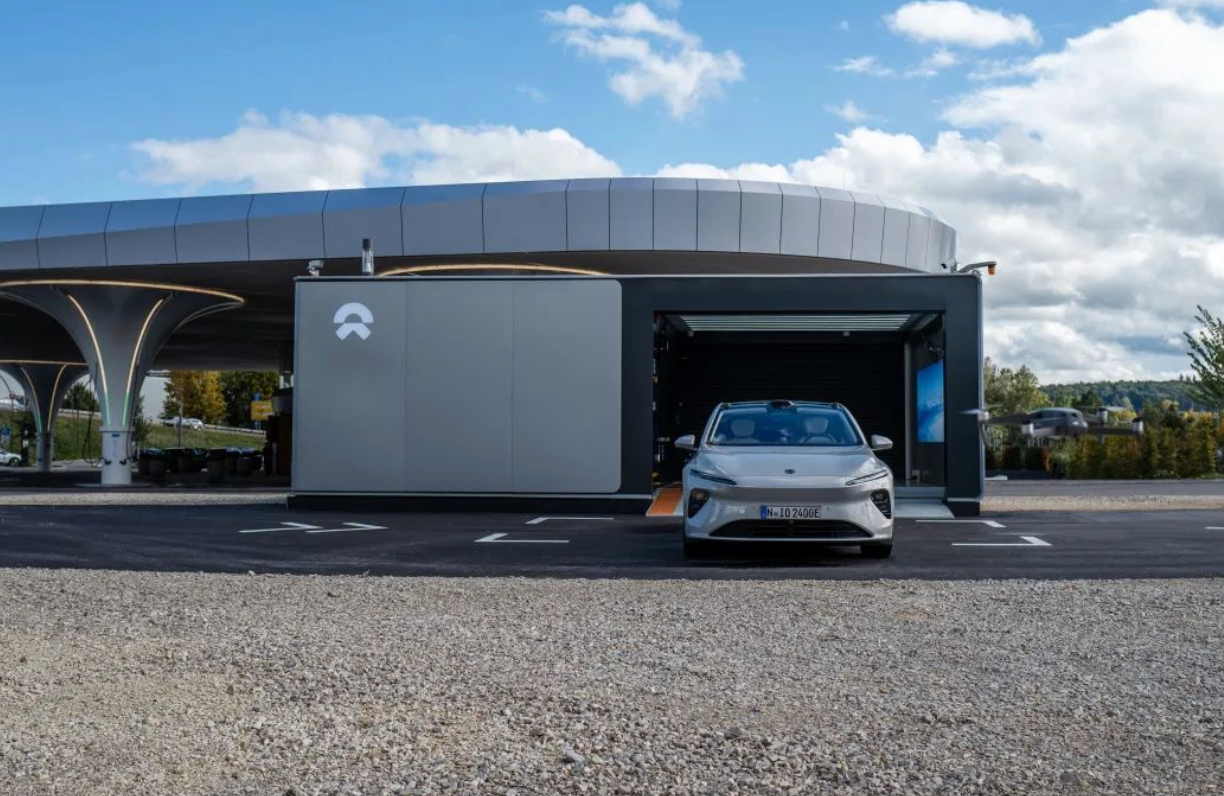
The 75kWh battery version of NIO ET7 is priced at 81,900 Euros (about 601,000 RMB), while its domestic price is 458,000 RMB.
The 100kWh battery version is priced at 90,900 Euros (about 667,000 RMB), while its domestic price is 516,000 RMB.
Similarly, the corresponding buyout prices of EL7/ET5 have also been announced, with significant increases compared to their domestic prices.
Looking at ET7 only, its European price is at least 150,000 RMB more expensive than its domestic price.
On the one hand, it is because of tariffs, transportation costs, and other reasons. On the other hand, it is also due to the factor that NIO’s three electric products are indeed competitive in Europe.
For example, in the latest crash test rankings released by E-NCAP the other day, while a batch of independent products performed well, NIO ET7, after the ES8, became the second NIO product to receive a five-star safety rating from E-NCAP.

Compared with ES8, the second-generation platform-based ET7 performs better in various detailed evaluation items.
Therefore, NIO has specially conducted a technical analysis of the white body of the ET7. Here, we will share some knowledge about vehicle safety, as well as some technical details and design considerations of the white body of ET7.
ET7 is positioned as a luxury pure electric mid-to-large-sized sedan, with a curb weight of about 2.3 tons. The total weight of the steel-aluminum hybrid structure white body is nearly 420kg, accounting for about 6/1 of the vehicle weight, including 42% aluminum, 57% steel, and 1% composite material rear seats (chassis).### 57% of the steel contains 41.9% high-strength steel, and high-strength ultra-high-strength steel over 1500MPa accounts for 44% in the body structure of ET7. The material selection of the entire body frame is very solid.
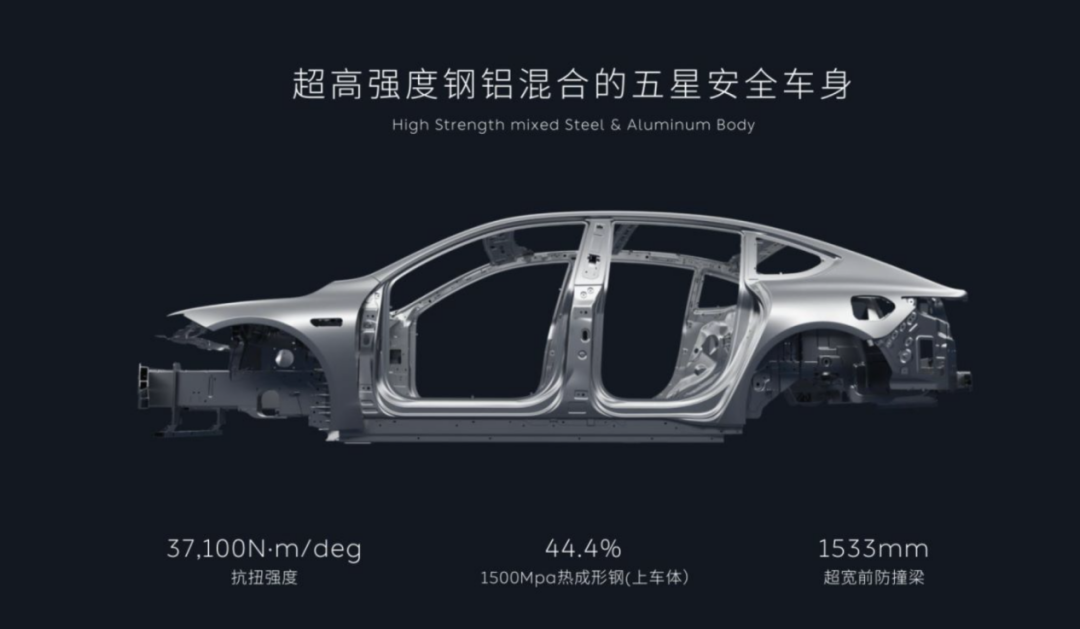
The design of force transmission and soft-hard combination is very important for crashworthiness.
Through the bare body, we can see that the front and rear aluminum alloy anti-collision beams of ET7 are very wide and thick. The span of the front anti-collision beam as a whole reaches 1533mm, and there is also a sub anti-collision beam below it. The span of the rear anti-collision beam exceeds 1.9m.
The front and rear anti-collision beams have a large coverage of the entire vehicle body’s transverse section, which is beneficial for scenes with more offset collisions in daily life.
The advantage of the wide and thick front anti-collision beam is that it can effectively reduce the impact force of the opponent’s vehicle and disperse the opponent’s collision force.
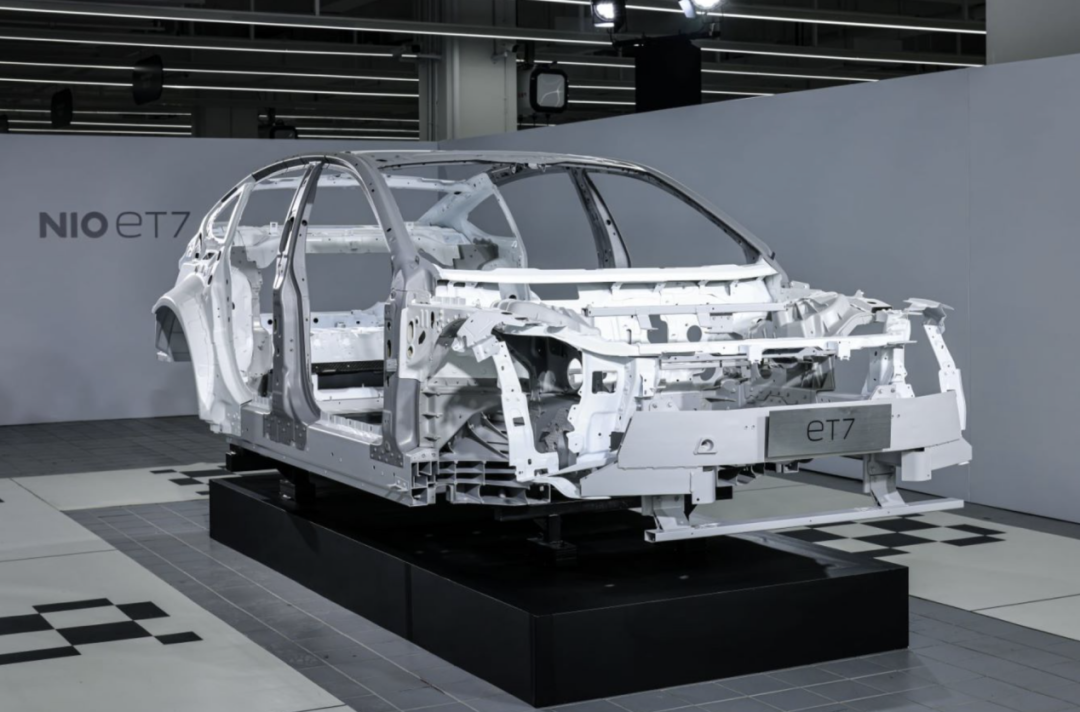
In the E-NCAP test, NIO ET7 scored 91% in the passenger safety test, and both the front and side impact scores were high, which is an improvement compared to the ES8.
Although as a medium-to-large pure electric sedan, it is still relatively easy to suffer losses when facing a stationary rigid barrier. If the other party is stationary, the heavier you are, the more you need to consume more energy during the collision.
Therefore, in terms of passive safety of the vehicle, especially for pure electric vehicles, besides protecting the battery pack, it is necessary to consider energy absorption design, as well as how to use structural crumple zones to reduce the kinetic energy during a collision.
For example, the two large structures behind the front anti-collision beam of the ET7 are energy absorption boxes with a size of 15-20cm. There are many transverse guiding structures inside the energy absorption boxes. The current design aims to achieve a hierarchical deformation during a collision in order to increase the energy absorption capacity.
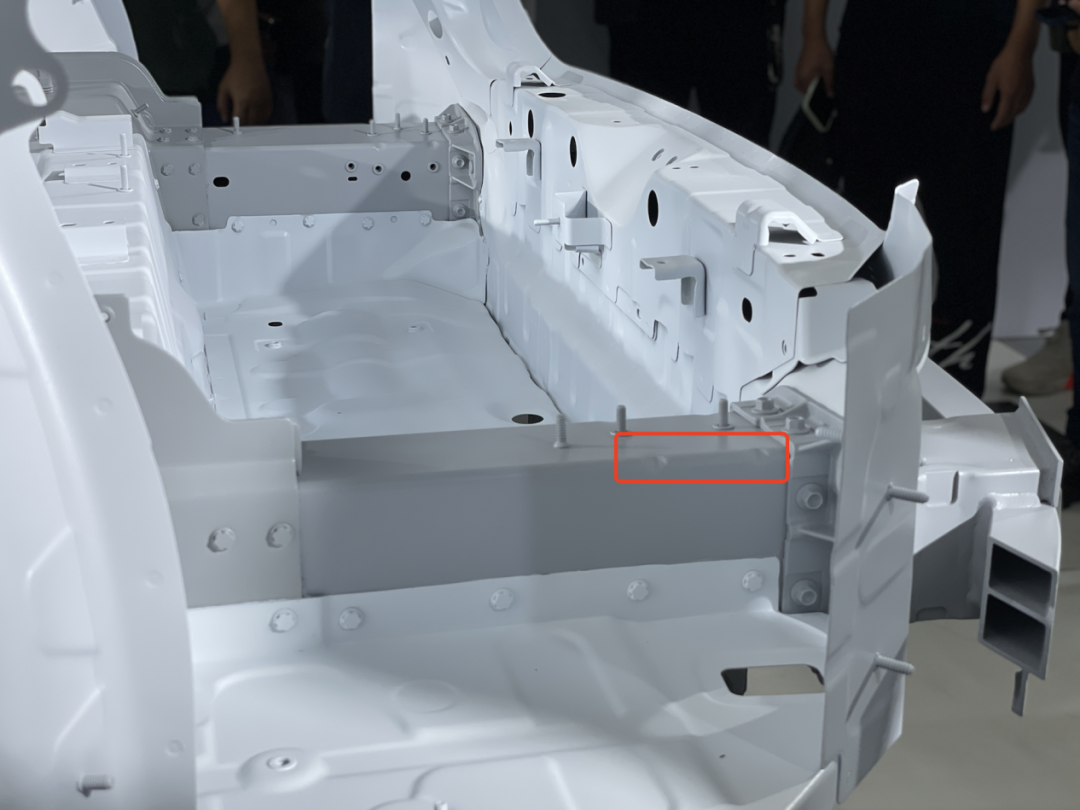
You can actually see some design details on the surface of the energy absorption box, such as intentional grooves on the facets, which induce deformation to absorb collision energy.
This combination of soft and hard design is also reflected in other parts of the NIO ET7, such as its B-pillar.
According to the NIO body engineer, the top and bottom of the B-pillar of the ET7 can be divided into six-four distribution. About sixty percent of the upper part is made of high-strength hot-formed steel of 1300-1500 MPa, while the lower part is a soft region with a strength of only 600-800 MPa, which mainly serves to protect the human body. For instance, the hinges are also located in the hard area.
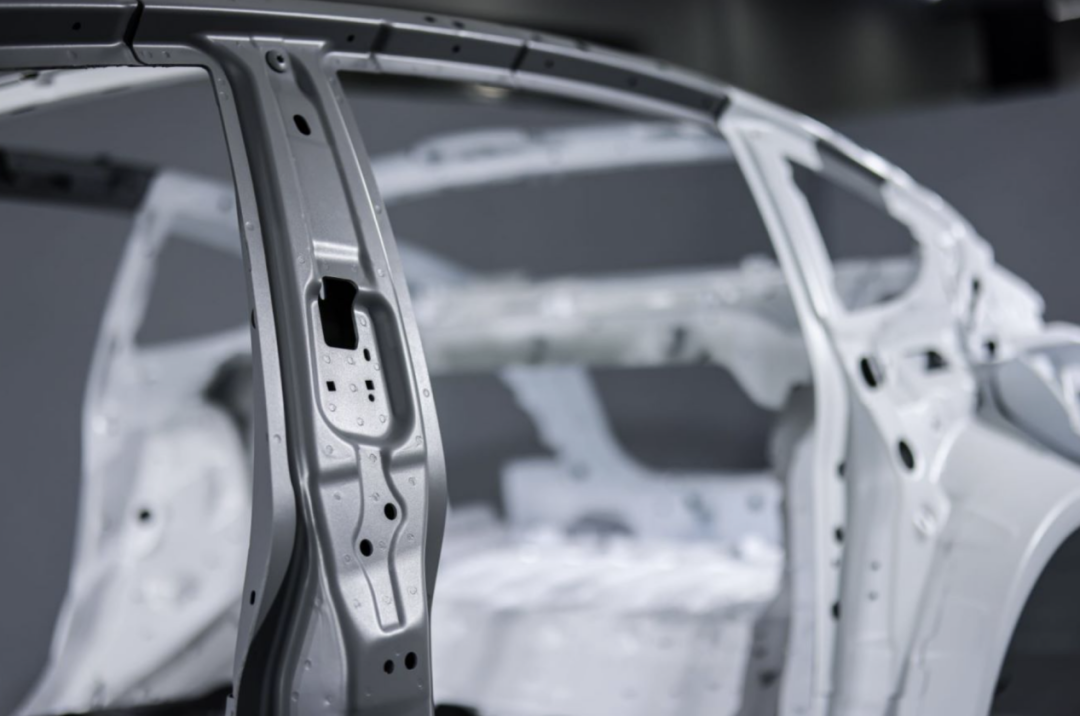
On the other hand, the lower part mainly supports the seat and is designed as a soft region to absorb energy in collisions. Even some special designs are made at the bottom of the B-pillar to guide the soft juncture to absorb energy in a crash, possibly also to protect the battery pack which is located behind the pillar.
Instead of passively withstanding the transfer of collision energy to the bottom plate crossbeam and battery case, it is better to choose to crush and absorb some of the energy.
In fact, the entire B-pillar plays a role in energy absorption in side impacts in the lower section. The upper section is designed to withstand force but behind the concept of “withstanding force,” there is an important factor of transmission of force.
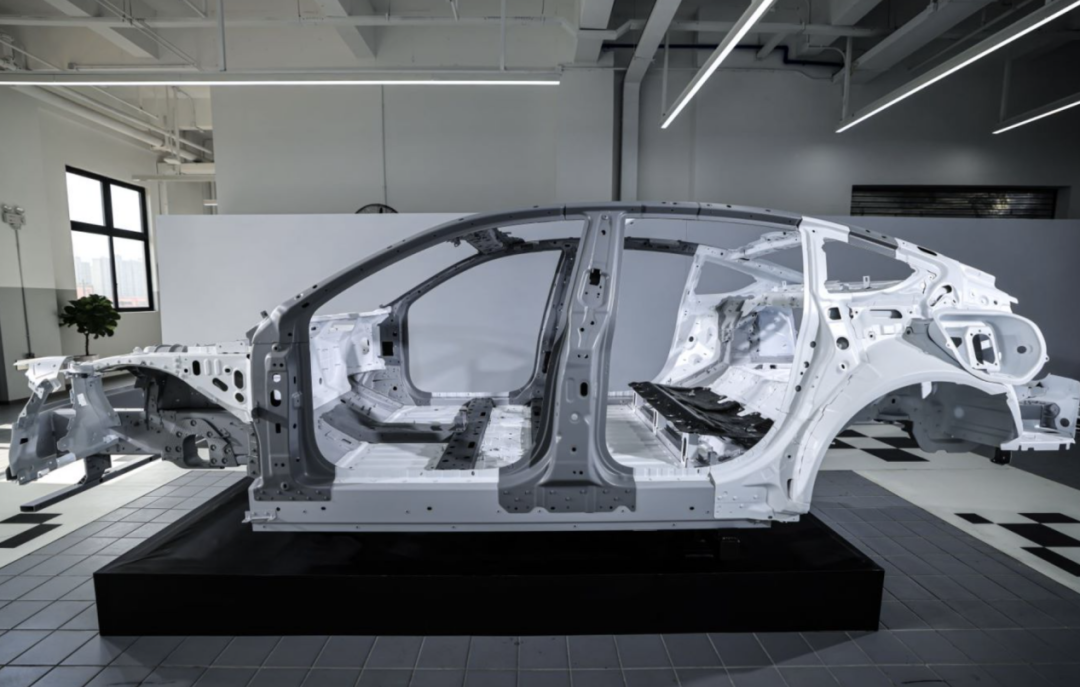
Effective force transmission structure and the combination of soft and hard crumple design are two important factors in ensuring vehicle collision safety. Therefore, passive safety is not only solved by simply playing with materials.
For instance, in the area where the upper part of the ET7 B-pillar is connected to the upper beam and roof beam of the A-pillar, there is a bolt that connects several layers of material together. This connection allows for effective force transfer during collisions and better disperses the force into the side beams on both sides.
Several “beams and pillars” on the white body that fight together to transfer force to each other, can also be found in the front firewall position of the ET7 and in the designs of previous models, such as the ES6 and ES8.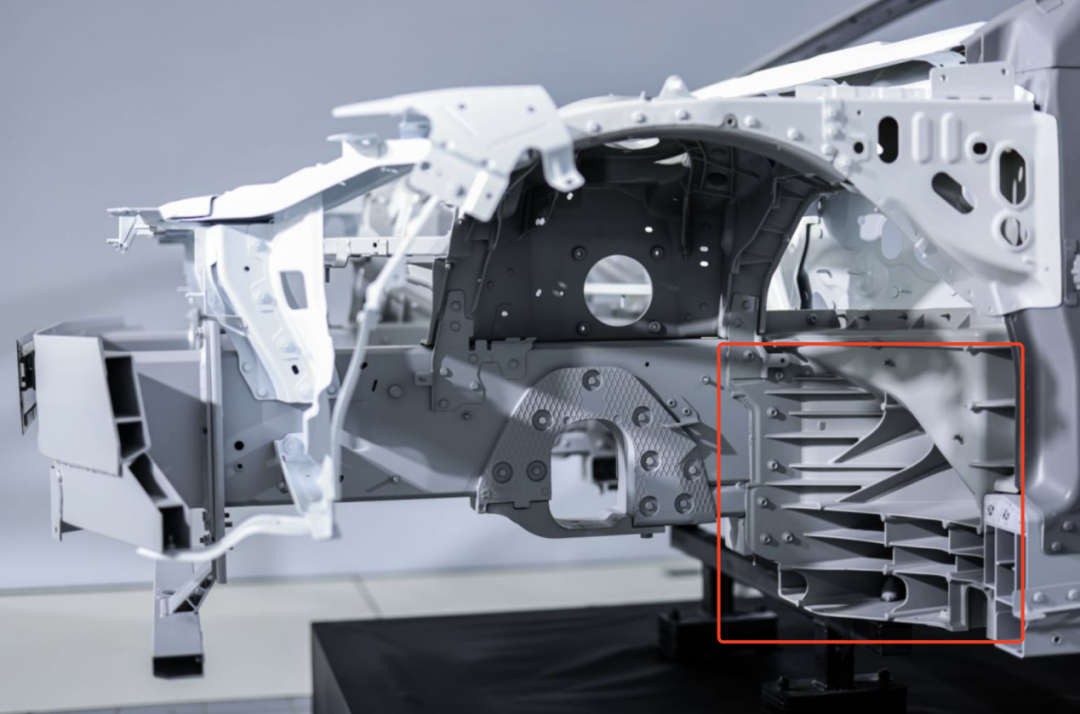
This is the Torque box, which is also called the torsion box structure, indicated by the red box in the above picture.
The Torque box is a monolithic casting structure that connects the front longitudinal beam in the front and the threshold beam, A-pillar lower structure, and the foot pedal position in the back, and firmly binds the four critical transmission paths in the front of the vehicle together.
One of its functions is that when a frontal impact force comes during a collision, the energy can be effectively transferred to the transmission path to avoid intrusion into the passenger compartment in the back, especially in small offset collisions of up to 25%.
Meanwhile, the strength of this torsion box itself is also very high, which ensures that passengers in the passenger compartment have a very good survival space, and it will further play a role in the restraint system.
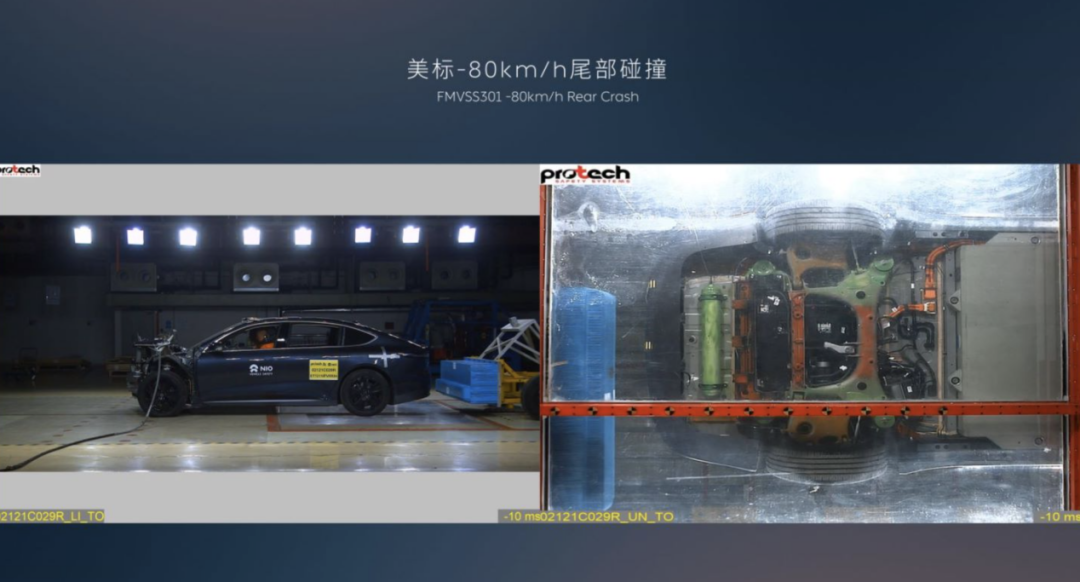
Speaking of small offset collisions of up to 25%, although E-NCAP has not yet tested this item, NIO has considered such working conditions when developing the white body of the ET7, including the 25% offset collision of the front passenger and the 80 km/h rear-end collision test of American standards, and it is indeed a globally developed vehicle with global standards.
Remote central airbag, an added bonus for the restraint system
Okay, let’s say goodbye to the white body of the ET7 and briefly talk about the restraint system of the ET7.
The safety of the vehicle body structure is the basis, and the restraint system is equally important. This is the last straw to save lives in the event of a collision.
The NIO ET7 comes standard with seven airbags, including front and rear seat belts, front and side air curtains, and a remote central airbag.
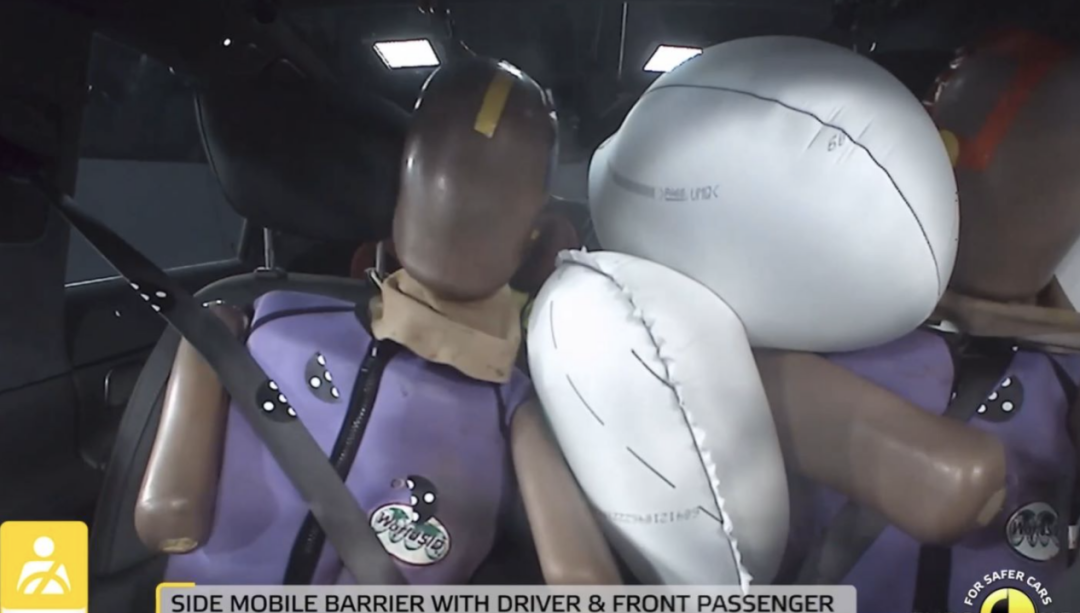
The remote central airbag is a highlight. Consumers in China have always judged the safety of a vehicle by its number of airbags, thinking that the more airbags, the safer the vehicle is. But it is not necessarily true.Actually, in reality, many impacts come from side collisions. Ordinary side airbags only protect the occupants’ outer side from contact with the vehicle, but neglect the risk of collisions between passengers on the same row during accidents.
ET7 is the first mid-to-large-sized sedan with a far-end center airbag as standard in independent brands, and this configuration is standard in both China and Europe.

This far-end center airbag is located on the inner side of the driver’s seatback, featuring two large-volume chambers for the head and chest. When a collision occurs, it expands from the right side of the driver’s seat.
In the E-NCAP collision test, ET7 scored 15.5 points (out of 16 points) in the side collision test, which can be said to perform quite well.
In fact, the far-end center airbag not only protects the driver and co-driver from mutual harm during a side collision, but also plays a certain restraining role even in a collision involving only the driver.
Especially in major accidents, such as rollovers, it can effectively avoid the driver being affected by the hard impact of side doors and center console armrests and other components.
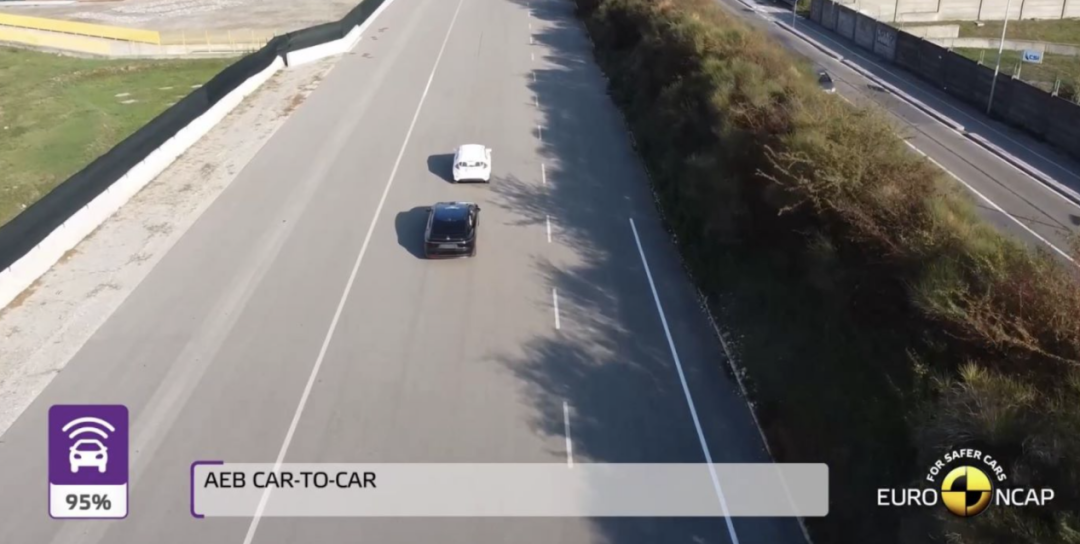
Finally, let’s briefly talk about the active safety performance of NIO ET7. Actually, everyone should be very clear about the results in this aspect. These intelligent capabilities represented by assisted driving are the specialties of independent brands nowadays.
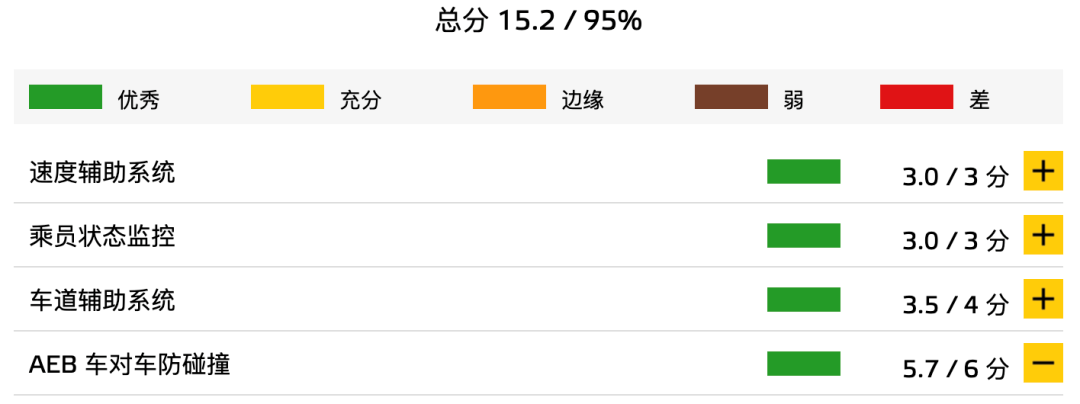
For example, ET7 scored 95% in the safety assistance category in the E-NCAP test, with almost perfect scores in several detailed evaluations.
After all, with 11 8 million-pixel high-definition cameras, 1 ultra-long-distance high-precision lidar, 5 millimeter-wave radars, 12 ultrasonic radars, 2 high-precision positioning units, 1 vehicle-road synergy perception, 1 enhanced driver perception, and other capabilities mounted on it, one can see that these capabilities arranged in an orderly manner are not to be underestimated.In the E-NCAP test, ET7 also scored the highest among all self-owned pure electric vehicle models in terms of overall scores in the four major categories of passenger safety, child safety, vulnerable road user safety, and assisted safety.
This article is a translation by ChatGPT of a Chinese report from 42HOW. If you have any questions about it, please email bd@42how.com.
